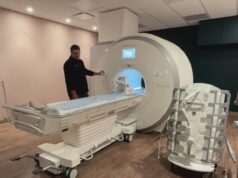If you’re thinking about becoming a doctor, one of the first things you might wonder is, “How many medical students are in the US?” The process of applying to study medicine in the USA is quite different, with application deadlines much earlier than in other places.
Studying medicine in the United States is tough, but it’s worth it if you’re passionate and ready to put in the hard work needed. Once you graduate, you’ll have the skills to aid people in need and create a difference in their lives. That alone makes all the hard work worth it.
In this article, we’ll give you a complete picture of the medical student scene in the United States, covering things like the number of medical students and resources to aid you in making wise choices about your medical education.
How Many Medical Students Are in The US?
In the 2022-2023 academic year, there were 55,188 applicants to medical school. It marks an 11.6% decrease from 2021-22 but a 4.1% increase from 2020-21. Enrollment in medical school remained steady at 22,712 students in 2022-23, similar to 2021-22, and up by 2.1% from 2020-21.
In 2022-23, nearly 42% of people who applied to medical school were accepted, which rose from the previous year. The AAMC shared this information. From 2013 to 2022, the percentage of female applicants to medical school rose from 46.2% to 56.5%.
In the 2022-2023 session, there were 13.1% more female applicants than male applicants. Overall, medical school enrollment has reached 96,520 students, marking a 17.8% boost since 2012.
Race and Ethnicity Details among Medical Students in The United States
More applicants and matriculants from various medical groups saw increases compared to the figures from 2020-21. Compared to 2020-21, more applicants from Asian backgrounds joined medical schools, up by 13.3%, with matriculants increasing by 17.7% to 6,525.
The numbers for Alaska Native or American Indian applicants stayed similar, but the number of matriculants decreased by 9.3% to 225.
Furthermore, African American or Black applicants saw a 14% increase, and matriculants rose 9% to 2,308 from 2020-21. It boosted the total enrollment of African American or Black students to a record-breaking 9,630. Meanwhile, white applicants rose by 2.1%, but matriculants dropped by 0.62% to 11,800.
In addition, Latino, Hispanic, or Spanish applicants rose by 7.3%, and matriculants rose by 4% to reach 2,784 from 2020-21. It pushed the overall enrollment of students of Latino, Hispanic, or Spanish origin to a record high of 11,631.
How Many Medical Schools Are There in The United States?
Medical schools play a vital role in making important scientific discoveries every year. In the United States, there are two main types of medical schools: osteopathic (DO-granting) and allopathic (MD-granting).
Allopathic schools concentrate on conventional medicine practice, while osteopathic schools prioritize a holistic approach. Osteopathic schools also integrate manual manipulation techniques into their curriculum known as OMT (osteopathic manipulative treatment).
Across the United States, 192 accredited medical schools are available. They offer more than 30,000 spots for incoming students annually. Nearly 155 schools provide MD-granting programs, and 37 accredited osteopathic schools are in the US.
Moreover, the United States Department of Education approves several international medical schools. It offers additional choices for students interested in studying medicine abroad.
When considering the number of medical schools in the United States, it’s crucial to understand the distinctions between out-of-state, in-state, and international institutions. In-state schools generally have lower tuition fees for state residents, while out-of-state schools often charge higher tuition rates.
International medical schools might have different admission criteria, clinical opportunities, and curriculum structures than schools based in the US. When deciding on a school, factors like curriculum, location, research and clinical opportunities, and financial considerations must be considered.
In 2023, the University of Washington clinched the top spot as the best medical school for primary care, according to U.S. News World and Report. It outperformed other leading schools, such as Harvard and Johns Hopkins, in securing the title.
Harvard University maintains its long-standing position as the best medical school for research in the United States. This Ivy League school has held this prestigious position for several years and is renowned globally for its medical program.
The Indiana University School of Medicine has the highest total enrollment among MD-granting medical schools, with 1,535 students.
What Are The Most First-Year Medical Students in The US?
Once again, women made up most of the applicants (56.5%), matriculants (55.6%), and overall enrollment (53.8%). It marks the fourth straight year of women dominating all three categories.
The number of male matriculants remained steady at 10,062 compared to last year. It marks the first time there hasn’t been a decline in seven years.
Women consistently outnumber men in medical school applications. Women applicants totaled 31,190, showing increases yearly except for two years since 2012. On the other hand, male applicants totaled 23,924, with decreases every year except once since 2016.
Average Costs Of Studying Medicine In The US
Studying medicine in the US can require a substantial financial investment. Research from the Association of American Medical Colleges (AAMC) shows that the average expense for a 4-year medical school program falls between $150,444 and $247,664.
It covers tuition fees and other costs such as textbooks, health insurance, insurance, living expenses, and other miscellaneous costs. In 2022, tuition costs for medical school were between $18,228 and $74,035 annually.
This amount ranges between $72,912 and $292,140 over the course of a four-year program. These figures don’t include additional expenses such as lab fees and the United States Medical Licensing Examination (USMLE), which can vary yearly.
According to the AAMC, tuition costs at public and private medical schools are expected to rise by 3% to 4% for the 2022-2023 academic year, continuing a trend seen over the past decade. By 2025, the projected cost could reach around $250,000.
Public medical schools tend to have slightly lower average costs than private ones. Many medical schools provide various financial aid options, such as scholarships, grants, and bursaries. Check their websites to see if you qualify for any financial aid.
Requirements for Admission to US Medical Schools
Before applying to any US medical school as an international student, ensure you have finished a four-year bachelor’s degree. You must take all the required classes for the specific medical schools you’re applying to.
The required subjects change depending on the school, but they typically include these science courses: organic chemistry, general chemistry, and biology. Many students pick undergraduate programs in Chemistry or Biology to prepare for these classes and the MCAT exam.
Some schools might also want you to have taken other classes, such as humanities, English, math, and more science courses. It’s wise to research medical schools while studying undergraduate programs so you can pick your classes right.
You’ll also have to finish the MCAT test. MCAT stands for Medical College Admissions Test, and it has four parts. It checks how well you think critically, write clearly, solve problems, and understand scientific concepts. An excellent score on the MCAT test is crucial for admission into a fine medical school.
It is wise to prepare for the test ahead of time. You should take the MCAT before you plan to begin studying in a medical school, so be sure to register for your MCAT test on time.
Once you have a solid MCAT score and bachelor’s degree, your next move is to apply to US medical schools. Regrettably, as an international student, you’ll face some challenges compared to local students.
Publicly funded universities often prioritize students from their state when investing their state funds. It helps ensure enough doctors for the local area, but it can make it more challenging for international students to get admission to the university.
Private universities are an option, but they tend to be more expensive. Students must consider the pros and cons of every option and choose the school that best suits them.
How Can You Apply To Medical Schools in The United States?
The process of applying to medical school can be complicated and takes a lot of time. For a successful application, it’s important to understand all the different parts of the process and when they need to be completed.
You have several ways to apply when you want to get into medical school in the United States. If you aim for an MD program, use the American Medical College Application Service (AMCAS). You’ll apply through the American Association of Colleges of Osteopathic Medicine Application Service (AACOMAS) for DO programs.
But, if your sights are set on MD programs at Texas University, things work a bit differently. You must submit your application through the Texas Medical and Dental Schools Application Service (TMDSAS).
AMCAS handles sending your application, which includes your work experience, transcripts of your coursework, and any extracurricular activities, along with your MCAT score, to the medical schools you’re interested in.
Furthermore, some medical schools might ask for extra material like essays or recommendation letters. It is called a secondary application, and there could be an additional cost.
To send an application to one medical school through AMCAS costs $175. There is an extra $45 for each additional school you add to your application. There’s a Fee Assistance Program to assist students who need financial support with these fees and MCAT fees.
Conclusion
How many medical students are in the US? There’s a large number of medical students across the country. Getting through the journey to become a doctor is challenging but worth it. Knowing the number of medical students in the US and the resources available can help you determine what’s best for your medical education.
As you research US medical schools, consider research and clinical opportunities, location, costs, and curriculum. Remember that the right medical college for you will match your career and personal goals. Understanding the medical student landscape in the US is vital as you start your journey to becoming a doctor.
You’ve got plenty of choices with many accredited medical schools out there. By checking out the top schools, using helpful resources such as medical school admissions consulting, and getting ready for the application procedure, you’ll be set up well to succeed in your medical studies.














